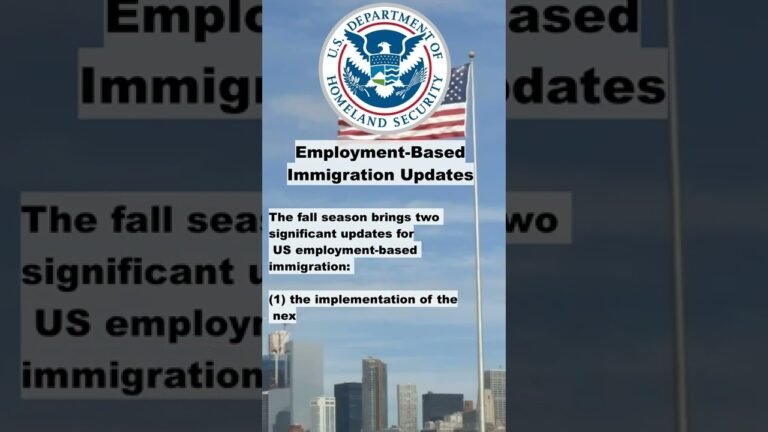
Employment-Based Immigration Updates
The fall season brings two significant updates for US employment-based immigration: (1) the implementation of the next phase of premium processing expansion and (2) a significant retrogression of certain immigrant visa categories.
Next Phase of Premium Processing Expansion
On September 15, 2022, U.S. Citizenship and Immigration Services (USCIS) announced the implementation of the third phase of its expansion of premium processing. As with the first and second phases, this next phase applies specifically to pending I-140, Immigrant Petitions for Alien Workers, in the EB-1 Multinational Executive and Manager category and the EB-2 National Interest Waiver (NIW) category.
This new expansion phase is part of a broader plan during which USCIS will make premium processing services available to additional form types. The more comprehensive USCIS plan seeks to increase efficiency, reduce wide backlogs and provide relief to foreign nationals affected by processing delays. As part of these efforts, USCIS is expanding premium processing for certain EB-1 and EB-2 classifications. The expansion is being implemented in three phases so far:
The First phase was implemented on June 1, 2022 by accepting Form I-907, Requests for Premium Processing Service, for EB-1C multinational executive and manager petitions received on or before January 1, 2021.
The Second phase was implemented on July 1, 2022 by accepting Form I-907, Requests for Premium Processing Service, for EB-2 NIW petitions received on or before June 1, 2021, and EB-1C multinational executive and manager petitions received on or before March 1, 2021.
The Third phase commenced on September 15, 2022 by accepting Form I-907, Requests for Premium Processing Service, for EB-1C multinational executive and manager petitions received on or before January 1, 2022; and EB-2 NIW petitions received on or before February 1, 2022.
USCIS announced that it would reject premium processing requests for these newly included Form I-140 classifications if the receipt date is after the designated dates. Moreover, USCIS will not accept new (initial) Forms I-140 for EB-1C and EB-2 NIW classifications with a premium processing request. The premium processing timeframe to take adjudicative action for these I-140 petitions will be 45 days from the date USCIS receives the request for premium processing. Additionally, on May 24, 2022, USCIS published a new version of Form I-907, dated 05/31/22, and as of July 1, the older 09/30/20 edition of Form I-907 is no longer accepted.
USCIS will likely announce additional premium processing upgrades concerning pending or perhaps new EB-1C Multinational Executive and Manager and EB-2 NIW petitions before the end of the year and at the beginning of next year. In addition, the following phases of premium processing expansion will likely include Forms I-539 and I-765 for specific F (student), M (vocational), and J nonimmigrants (exchange visitors) .
October 2022 Visa Bulletin Brings a Significant Retrogression for Certain Categories
On September 1, 2022, the US Department of State (DOS) released the October Visa Bulletin, showing significant retrogression in India EB-2 and marginal advancement in other important employment-based categories. October is the most anticipated visa bulletin of the year, which determines the start of the Fiscal Year (FY) for immigrant visa allocations. Every new FY, Congress allocates 140,000 green cards to employment-based applicants. Those are divided among the five preference categories. Every month, USCIS announces whether foreign nationals already living in the United States should file their Permanent Residence or Adjustment of Status Applications based on the Final Action Dates or the Dates for Filing. The visa bulletin includes the Dates for Filing chart and the Final Action Dates chart every month. “The Dates for Filing” indicate the earliest date a foreign national may apply for permanent resident status. “The Final Action Dates” indicate when a permanent residence application may be approved and a permanent resident card issued.
This October, as expected, USCIS announced that it would shift to accepting adjustment of status applications based on the Dates for Filing Chart instead of the Final Action Dates Chart. While the Dates for Filing are usually earlier than the Final Action Dates, the October shift won’t bring much relief to India-born foreign nationals. The retrogression for India EB-2 is so significant that the cutoff date for filing adjustment of status applications will go from January 1, 2015, to May 1, 2012, which represents a more than two year retrogression from the Final Action Date of September’s Visa Bulletin of December 1, 2014. In other words, the “green card” queue for many applicants just became significantly longer.
source